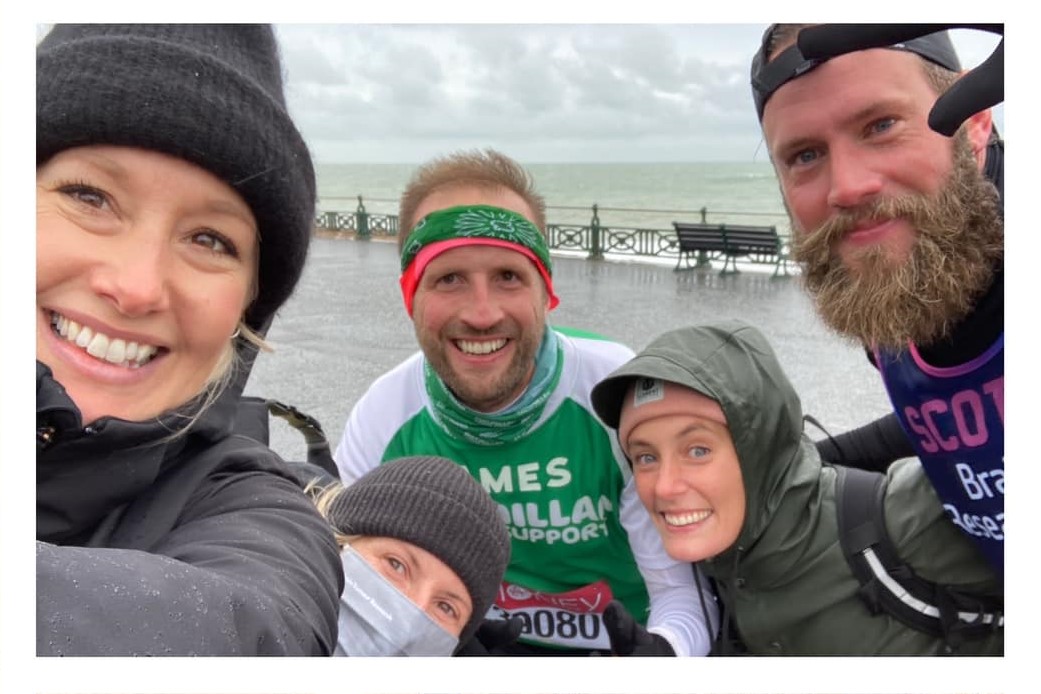Photo Credit: James Hudd/Facebook.com
It was a night that James Hudd would never forget. In August 2018, there was a weird tingling feeling in his arm. At the time, he brushed off the experience to keep pushing forward with his career in sound engineering.
A quick conversation with his general practitioner ended with an “If it happens again, give me a call.”
It happened five days later. This time, the feeling wasn’t confined to his arm. It had spread to other parts of his body with more intensity. He ran to the bathroom because he felt sick, then passed out.
Hudd woke up with a splitting headache and a sore tongue because he’d bitten down on it hard. He contacted medical officials that morning, who told him to visit the accident and emergency department. [[1]]
Those incidents were his first two seizures. A CT scan found a lesion on his brain, and suddenly his father’s low-grade acoustic neuroma diagnosis from a few years previous came to mind. [[2]]
James Had a High-Grade Tumor That Required Removal
After Hudd’s diagnosis, the medical team treating him was confident that he had a high-grade tumor. That meant the best treatment option for removal was to have an awake craniotomy. He’d undergo surgery while conscious.
Doctors gave Hudd some Gliolan to prepare for the treatment, which is known as the “pink drink.” It highlights the brain tumor cells so that they are easier to remove. [[3]]
The surgery was successful. After removing the tumor, it was confirmed that James had a Grade 3 anaplastic astrocytoma. That meant his journey wasn’t over since surgery for this condition is never considered curative. To ensure that his health was clear, he had to undergo six weeks of radiotherapy and a year of chemotherapy.
Astrocytomas are tumors that form from the cells that help the brain’s neurons function correctly. They’re graded at four levels, with Grade 1 being the most benign and Grade 4 the most malignant. [[4]]
Hudd says he took time off from work to manage the treatment process, but the side effects were minimal, and his recovery went well. “After the surgery and treatment, I just had to accept that there was a ‘new me’ now,” he said. “I couldn’t live my life as I used to – I couldn’t work as freelancing was too demanding for me.”
James said he had to accept his circumstances rather than fight against them. “Things did improve over time,” he said, “but it just wasn’t the same.”
The Tumor Returned in 2022 with a Vengeance
After several health scares throughout the pandemic, including more treatment cycles to ensure stability in his condition, a routine scan found that the tumor had returned and grown – or that scarring from the previous radiotherapy was developing.
The only way to tell for sure what was happening to his health was to have another awake craniotomy performed. As before, as much of the tumor was removed as possible.
It had turned into a Grade 4 astrocytoma, which is called a glioblastoma. His medical team sent the tissues for examination, and the results were unexpected. They showed that James qualified for a medical trial because the tumor had a rare genetic mutation that caused proteins to bond together, creating cells that turned into unwanted growth.
Instead of chemotherapy, he was put into a clinical trial. Many stories like this end with a miracle cure, but it wasn’t that way for James. A few weeks into the treatment course caused Hudd to develop more neurological changes. The tumor was growing, which meant the treatment was ineffective.
His medical team advised a return to chemotherapy to ensure his condition stabilized.
For James, His Vision is Still Looking Forward
He completed the London Marathon in October 2021 while battling this condition, crossing the finish line in just over five and a half hours. Running has always been part of Hudd’s life, having participated in the marathon in 2013 and the Paris Marathon in 2017. [[5]]
The weather that day was “horrible,” according to Hudd. The rain fell for 48 hours, and the wind was blowing throughout the marathon weekend. “I was running alongside my buddy Scott, who was running for Brain Research UK, and I was heartened by the fact he was equally taken back by the conditions,” Hudd wrote on his blog.
Hudd’s efforts raised thousands of pounds for Macmillan Cancer Support with the help of his medical team. James says that living with an uncertain future is difficult, but the ultimate goal is to increase research funding so that researchers can find cures. [[6]]
It was also a way to feel a bit normal after numerous months of different treatments.
“Everyone has always been saying to me that everything is great, and that various types of treatment have been going well despite setbacks, like stopping the trial. I know that this is all really heading in one direction and, at some point, things will not be good. That makes me nervous as I don’t know how to react to that.”
You can follow how James through the regular updates he offers on his blog.
References:
[[1]] https://www.braintumourresearch.org/stories/in-hope/in-hope-stories/james-hudd; [[2]] https://www.hopkinsmedicine.org/health/conditions-and-diseases/epilepsy/evaluation-of-a-firsttime-seizure; [[3]] https://www.ema.europa.eu/en/documents/overview/gliolan-epar-summary-public_en.pdf; [[4]]https://www.aans.org/en/Patients/Neurosurgical-Conditions-and-Treatments/Astrocytoma-Tumors; [[5]] https://journals.rcni.com/nursing-standard/feature/brain-tumours-treatment-challenges-and-how-to-support-patients-who-receive-a-diagnosis-ns.37.1.73.s23/abs; [[6]]https://www.thebraintumourcharity.org/media-centre/news/supporter-stories/navigating-the-path-unknown/












